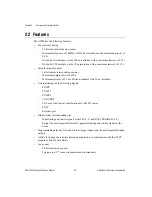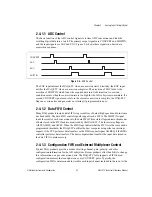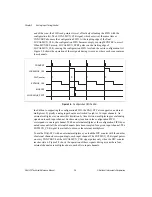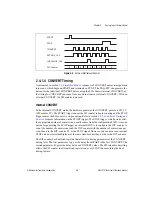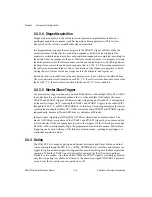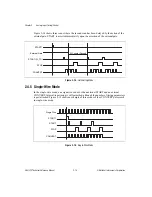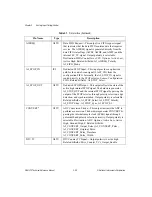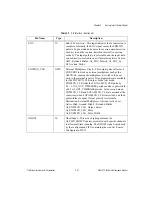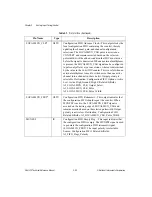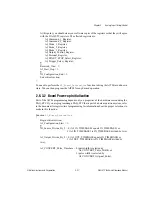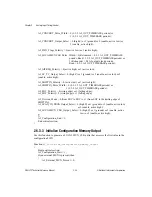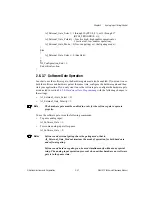
Chapter 2
Analog Input Timing/Control
DAQ-STC Technical Reference Manual
2-16
©
National Instruments Corporation
2.4.3.4 Staged Acquisition
Staged acquisition refers to the software action required to implement more than one
posttrigger acquisition sequence, each having unique timing parameters. This section
discusses how the software might handle staged acquisition.
In a programming sequence that occurs prior to the START1 trigger, software loads the
parameter values for the first two acquisition sequences. Software also configures the
counters to switch load registers after each acquisition sequence has completed, providing for
the switch from one sequence to the next. While the second sequence is in progress, software
loads the parameters for the third sequence into the unused load registers. Switching between
load registers occurs at the end of each sequence, that is, at SC_TC. This arrangement allows
the software a maximum latency of up to the duration of the sequence in progress to finish
writing the set of values for the next sequence into the alternate load register set.
Error detection is provided in case the next parameter set is not written in the allotted time.
The error-detection circuit is armed on each SC_TC. If a software clear does not occur before
the next SC_TC, the error-detection circuit latches an SC_TC error condition.
2.4.3.5 Master/Slave Trigger
Use master/slave triggers whenever you need DAQ devices with multiple DAQ-STC ASICs
to acquire data in a synchronized manner; that is, when multiple ASICs share the same
START1 and START2 triggers. With master/slave triggering, one DAQ-STC is designated to
be the master trigger ASIC, sourcing the START1 and START2 triggers to the other ASICs
through the PFI<0..9> or RTSI_TRIGGER<0..6> interface. This arrangement provides better
synchronization than if all DAQ-STC ASICs receive the same START1 and START2 triggers
independently, because different ASICs may synchronize differently.
In master/slave triggering, all DAQ-STC AITMs are timed from a common source. The
master ASIC delays recognition of the START1 and START2 triggers by one source period
to allow the slave ASICs adequate time to receive the triggers. On the following source edge,
all of the ASICs simultaneously begin the programmed acquisition sequence. Master/slave
triggering can be used with any of the three acquisition modes—pretrigger, posttrigger, or
continuous acquisition mode.
2.4.4 Gating
The DAQ-STC also supports gating, an additional external control layer. Both an external
source coming through the PFI<0..9> or RTSI_TRIGGER<0..6> interface and software can
supply the optional control signal. Gating provides a mechanism to pause the data acquisition
operation. When the START signal is internally generated (by the SI counter), gating is
available in two modes—free-run and halt. When the START signal is externally generated,
only free-run gating is available. In all modes, the conversion signal CONVERT is gated on
a scan basis; that is, entire scans are gated on or off.

